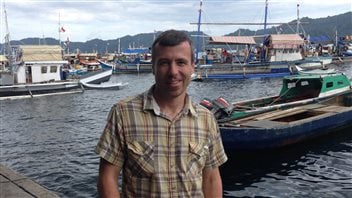Consumers can find out where their seafood came from and who caught it through a seafood traceability system developed in Canada called This Fish. In 2009, a group of fishermen from Vancouver Island off Canada’s western shore decided they needed such a system and looked for help from Ecotrust, a non-profit specializing in conservation and non-commercial economic development.
Countries demand sustainability
Countries like those in the EU were increasingly demanding regulation and proof that imported seafood was sustainably harvested. The fishermen needed some kind of certification to keep on exporting to those countries. They also wanted to connect directly with consumers and restaurateurs.
“Fishermen wanted to get out of the commodity market,” says Eric Tamm, general manager of This Fish. “They wanted to market the story of their seafood, tell the story of how it was sustainably caught, the quality of it, that it came from their boats, from their communities. So we started to work with the fishermen and built This Fish.”
Listen
Seafood info posted online
Seafood is labelled or tagged and consumers can scan the code or type it into a website and access information that has been provided by the person who caught it. The system is supported through grants and by the fishermen themselves.
Canada exports seafood from its eastern and westernmost provinces, so consumers in countries like the United States and Indonesia have access to some of the seafood entered into this traceability system.
“The seafood supply chain is incredibly opaque…People really don’t know where their seafood comes from. In many cases they don’t know where it’s harvested,” says Tamm. “There are estimates that 20 to 30 per cent of some species on the market are mislabelled or come from illegal fisheries.
‘Traceability…a pillar of sustainability’
“For us, traceability is one of the pillars of sustainability. If you don’t know where your seafood came from, how do you know it was sustainably caught or responsibly caught?
“So for us, it’s really about trying to leverage technology to improve the sustainability of the fishing industry, but also (to) reward the producers, those fishermen who are willing to be transparent about how they catch their fish, where they catch their fish, and use sustainable fishing methods,” adds Tamm.
Hope consumers will buy into sustainability
“We’re hoping that the supply chain and consumers will reward those harvesters that act responsibly and fish in a sustainable manner.”







For reasons beyond our control, and for an undetermined period of time, our comment section is now closed. However, our social networks remain open to your contributions.